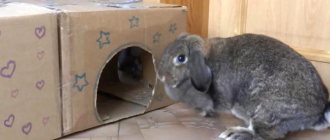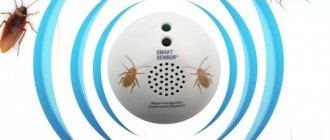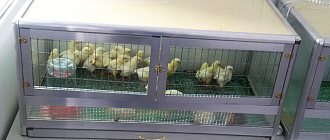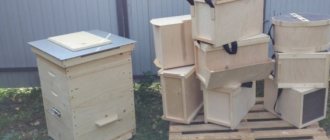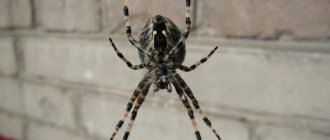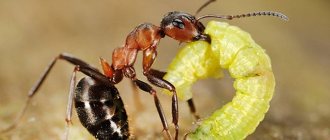- home
- Chinchilla
03/30/2019 Caring for a pet includes arranging its home with maximum comfort. It is very important for a chinchilla to have a cozy home in its cage.
The animal doesn't care what the house looks like. He needs to have a comfortable and safe place for rest and privacy. Therefore, it is necessary to find a reasonable balance between comfort for the animal and aesthetics for its owner.
Chinchilla house: purpose and installation
A chinchilla house has several purposes. During the day, the animal hides in it so that no one can disturb its sleep. Females absolutely need such a structure in order to breed offspring and take care of the cubs.
Install it in the farthest corner of the cage. It is advisable that there be twilight there. This way, a nocturnal animal will sleep more peacefully.
The house is installed permanently and firmly on the bottom of the cage. If you decide to attach it to the bars of the cage or raise it on a stand, you need to think about secure fastening. When the house falls, it will cause great stress and possible injury to the animal.
Types, shapes and types of houses for chinchillas
What types of houses for chinchillas can you find: made of wood, ceramics and plastic, straw and even twine. The last two options are chewed by chinchillas in a few weeks. In this regard, wooden ones will last longer.
The configurations of the houses are round, triangular, oval and rectangular. Projects in the form of wooden huts, medieval castles, and Indian wigwams look interesting.
You can choose any model based on financial availability and ideas about aesthetics. There are several criteria that must be adhered to:
- sizes are selected depending on the size of the chinchilla;
- the structure should not have holes or other places where a rodent’s paw could get stuck;
- In addition to the entrance, it is necessary to provide a window for ventilation;
- the most convenient for cleaning is the design without a bottom;
- The flat roof of the house is safe, from which the pet cannot fall;
- There should be no protruding nail heads, burrs or other dangerous protruding elements on the walls.
The corner design of the shelter looks compact and cozy and fits well into the interior of the animal’s home. The corner area in a chinchilla cage is psychologically associated with protection. That's why? Your pet will definitely like this project.
When a couple lives in a cage, there are two options: put one spacious house with two entrances or two nearby. The choice depends on the characters of the pets and the degree of their affection for each other. If you notice that even if there are two shelters, they tend to fit into one, you need to meet your friends halfway and put up one house of normal size.
If the chinchilla’s cage is small, it is worth considering the option of a house that is attached to the outside, therefore saving space in the animal’s home. The freed up area can be allocated for a play area.
House assembly
After all the preparatory procedures, they begin to assemble the house. They start by marking holes on the boards for future fastenings and cutting them out with a jigsaw. The boards can be fastened to each other using ordinary furniture dowels. For greater reliability, the hole for the dowel is drilled a millimeter smaller than the diameter of the wooden cylinder. However, a very large difference in diameter can cause the board to split. Assembling the house begins with the walls to which the balcony is attached. The roof is assembled from two slopes at an angle of 45 degrees. The roof is attached to the gable using four dowels. The roof can also be made straight or at a slight slope, which will allow the pet to use it as an additional resting area. It is better to use a metal mesh with a very fine cross-section as the floor, or install the house directly on the floor of the cage.
It is also important to think about how to make the house safe. All sides, grooves and seams of the housing must be well sanded using sandpaper.
But painting the house is not recommended - chinchillas will gnaw at their home, this is inevitable, and paint particles getting into the stomach will lead to severe poisoning.
It is also not recommended to use metal staples or nails in production.
Advantages of a house with a balcony
- Two entrances (main and from the balcony) allow the animal to feel safer,
- The balcony provides more opportunities for both games and relaxation,
- Inside the house there is twilight all the time, which will allow the animal to rest even during the day.
House for a chinchilla made of wood: advantages and disadvantages
The most common are wooden structures. They are inexpensive, sold everywhere, and come in a wide variety of shapes and sizes. It is possible to choose between single-story and multi-story options. A house for a chinchilla looks interesting with balconies, verandas, and stairs that give them a cozy look.
Wood products have their advantages:
- availability and variety of models, you can choose the design you like;
- low price, which saves money;
- easy to clean (just wipe with a damp cloth once a week);
Disadvantages of such products:
- animals may chew on the structure and you will have to change the house for another;
- if the chinchilla decides to mark the house, he will quickly and persistently absorb all the smells;
- the structures are light and there is a danger of them being thrown over;
- If the wooden house is varnished or glued with toxic glue, the chinchilla can get severe poisoning if it starts gnawing on it.
Before installing a wooden product into a cage, you need to make sure that all its components are carefully sanded. Otherwise, the rodent risks damaging its coat.
When an animal refuses to enter such a dwelling, there is no need to insist, but rather check for toxic resins that can emit an unpleasant odor.
Prevention and care of the house
To protect your pet, the installation of the house is carried out with an eye to prevention:
- the dwelling must be tightly attached to the wall or mesh;
- Careful adjustment of the surfaces is important (no gaps where a curious animal would immediately stick its paw);
- various chips and cracks are excluded;
- It is extremely undesirable to use traumatic fasteners - iron screws or self-tapping screws.
Home maintenance is quite simple.
Video: how to clean a chinchilla’s display case It is enough to promptly remove the remains of food that has got there and the old layer of sawdust from the house. To do this, the structure is simply raised.
It is advisable to wipe the walls with the same frequency (once a week) with a slightly damp cloth.
Major disinfection is carried out every 2-3 months. All surfaces of the house are wiped with swabs soaked in an alcohol solution of salicylic acid (concentration 1 or 2%). But there is one caveat - before use it is mixed with boiled water in equal parts.
Ceramic house for a chinchilla: pros and cons
A ceramic house can not be found very often, since the required dimensions for a chinchilla cannot always be found on sale. Usually they look like fairy-tale castles and towers. Structures in the shape of a pumpkin or mushroom look very attractive.
The advantages of such products:
- very aesthetic appearance, such a home can become a worthy interior decoration;
- ceramic products are much heavier than wooden ones and are more difficult to turn over;
- Rodents do not damage such structures with their teeth, so they will last longer;
- baked clay is a material that washes well;
Inside such a structure, it is convenient for the animal to hide from the heat in the summer, since it is always cool there, but this factor can also be attributed to the disadvantages of a cold room in the winter.
There are also a number of disadvantages:
- clay products for animals are rare and difficult to find in pet stores;
- ceramics are not cheap materials, so you will have to pay a lot of money for such an accessory;
- If fired clay is covered with a poor-quality glaze, it will emit toxic fumes.
Ceramic must be handled with care as it can easily break.
What is a house for?
Chinchillas are animals that love secluded places. There were cases when the little animal did not have its own secluded corner, and it fell into depression and then fell ill.
A house for any creature is a place where you can rest, sleep and relax, there will not be any further disturbances or disturbances.
You also need housing if you subsequently decide to breed animals. For a female chinchilla, the house will be the very place where she will be comfortable raising offspring and caring for them, without trying to find a secluded corner.
From the above it is clear that the animal loves privacy, so the house itself - no matter whether it is equipped in a cage or in a display case - should be placed in the darkest and most unlit corner.
Often the optimal place for the home is the bottom of the cage, so as not to worry about your pet once again. But if, in a design impulse, you decide to install an overnight shelter for an animal on a shelf, you should securely attach the walls of the structure to the rods and shelf.
This is because a chinchilla can steal a house or move it to the place it wants, and if the house is on a shelf, then the pet can fall along with the house and get injured.
A common material for making animal houses is wood. Budget-friendly and affordable material from which you can even build a house yourself.
Article on the topic: Feeder and hay for chinchillas - choice and creation with your own hands
The next most popular is plastic, even ceramics are less common. You can find wicker houses or those made from twine on the Internet. But they are not very practical, since the rodent will simply chew its house.
Wood is the best option, it is common and easy to work with. You can give it a variety of shapes, relief and appearance.
If we consider a small-sized cage, then the most common shapes are rectangular, round, oval, and less often triangular houses. You can, of course, find more intricate houses - castles or Indian wigwams. Here everything depends, if not on imagination, then on the price point.
In order not to make a mistake with the shape of the house, it is worth remembering the following points.
- The size of the house is selected based on the size of the rodent, its height, and density. The passage should be free, not impede movement, and the interior area of the house itself should also be free.
- No small or narrow holes. A chinchilla’s paw can get stuck in such holes, which can lead to injury, and if the “window” seems large enough to the chinchilla, it will definitely try to climb out through it and get stuck.
- The more doors or windows, the better. Air circulation is very important for your pet.
- If the house will stand at the bottom of a cage or display case, then you should choose a house without a bottom, as cleaning will be easier and more convenient.
- Sharp tips on locks or domes will impress your guests, but it can be dangerous for the baby animal. If the house is at the bottom of the cage, there is a high chance that the pet from the upper shelves may fall off and, falling on the tip of the dome, be injured.
- You should not skimp on the number of houses if you place several chinchillas in one cage. It is vital for them to have their own home, and if there is only one house, then there will be a fight between the pets for place of residence.
Article on the topic: DIY chinchilla display case - step-by-step instructions with drawings and photos
Wooden houses
Any material has its certain advantages, but also has disadvantages. Before choosing, you should always consider the material from different angles.
The tree does not have any restrictions; the houses can be either one-story or two- or three-story. It all depends on the wishes of the owner. The house can be equipped with a fence or a small veranda; a ladder or even a running wheel can be attached to the side. Due to this compactness, space is saved, which plays an important role if the cell itself is small in size.
The positive aspects of wood as a material for a house.
- The most common advantage is accessibility. There are a large number of such wooden houses on the shelves of pet stores. So the choice for your pet will not be so difficult.
- Price . Due to the use of inexpensive material, the price of the house will be low. Of course, unless you order a house from a designer.
- Convenient to clean: just clean the house with a brush, wipe with a damp cloth and you're done.
- Eco-friendly and safe material.
Negative aspects of using such material.
- Chinchillas love to chew on everything, and their own houses are no exception . If the tree from which the dwelling was made was too thin or had small parts, there is no doubt that the rodent feasted on them. It turns out that the house will need to be replaced after some time.
- Odor absorption. If the pet does not have its own “agreed” toilet place, then, most likely, the animal simply will not want to live in a house where the smell of urine accumulates.
- Before purchasing any wooden products, you should check whether it is varnished , because a chinchilla will definitely taste the wood, and if it is varnished, then the rodent can simply be poisoned. The same is the case with glue.
- Presence of industrial smell. Perhaps, if the animal does not want to move into a new home, it is worth ventilating the product, as there may be traces of the smell from the factory left in it.
Article on the topic: Choosing a cage (display) for a chinchilla - sizes, materials, cost
Ceramic houses
Ceramics as a material is not as in demand as wooden products.
Perhaps not everyone knows about such material, perhaps they find it not so practical. But accessories in the form of mushrooms and trees add ambiance, and they look very appropriate and beautiful, and they are easy to equip the cage with.
But still, this material is not deprived of positive qualities:
- clay objects are very beautiful and look like real ones, and such accessories will be an interesting addition to the cage;
- the houses are baked, there are no notches in them, so if the entrance opening is large, then it will be comfortable for the animal to run in and out of the house;
- ceramics make very heavy products, so the house will stand securely under its own weight, and the animal will not be able to drag it;
- a structure made of clay will last longer, a rodent is unlikely to be able to sharpen its teeth on it;
- easy to clean, wash and does not absorb odor;
- Thanks to its composition, the temperature inside the clay house is always cool, which will have a very beneficial effect on the animal in sultry hot weather.
Negative aspects of such a home for a chinchilla:
- ceramic houses are rare in simple and small pet stores, so inaccessibility can be considered a minus;
- there is an alternative - to make it to order, but then the price will “jump up”;
- In some models, poor-quality paint treatment is found, namely chemical glaze that can release toxins, which is very harmful to the animal.
Other materials for houses
There are interesting designs on sale made of durable plastic that are resistant to the teeth of rodents. They can have various shapes, often bright and attractive in appearance. They are easy to wash and clean. You should ask the seller for an environmental certificate for such products. Plastic is lightweight, so you need to immediately make sure that the structure is equipped with the ability to attach to walls or to the bottom.
There are cozy options made of nylon, folding out like a tent, with insulation and fur lining. The tent can not only be wiped, but also washed using baby or laundry soap.
The glass house for a rodent is easy to clean, it is environmentally friendly, but cold and uncomfortable for the pet.
Chinchillas love the shelter of their logs in the form of tunnels. They have good sound insulation, retain heat and are environmentally friendly. True, it is short-lived, because the rodent can gradually taste it.
As a good alternative to solid wood, there are plywood apartments, which can be of any configuration, bringing the ideas of creative designers into reality.
There is no need to confuse shelters for rest and containers for carrying animals. They have different purposes and designs.
What is a house for?
These animals need a separate “living space” - there should also be a house inside the cage. Such a location will be the best place for a chinchilla to rest, where it can also take refuge in case of danger (the animal is frightened by sharp and simply unfamiliar sounds).
If there are a couple of individuals, then this is an ideal point for solitude, and while waiting for the offspring, the female will look for the most protected corner, the role of which is played by an indoor house of suitable size.
Housing even influences the health of the rodent and its psychological state. Chinchillas are burrowing animals, and staying in secluded places is inherent in them at the level of instinct.
Article on the topic: Walking ball for chinchillas: the right choice and making it yourself
The absence of such a corner often unsettles the fluffy: he becomes wary, sometimes refuses to eat or even falls into apathy. Therefore, even before moving the animal into the cage, you will have to start arranging its house.
DIY chinchilla house
If you make a house for a chinchilla with your own hands, you can be sure of the safety of the chosen material and make a unique product according to your own sketch.
Materials and tools to prepare:
- wooden blanks 15 mm thick;
- fastening elements for furniture (dowels);
- grinding machine or sandpaper;
- wood hacksaw;
- ruler (tape measure) and pencil;
- electric drill.
Before you start work, you need to make drawings of the house on a sheet of paper. This is especially true for complex multi-story structures. If the house is small and simple, it is enough to adhere to the required dimensions, which are immediately marked on wooden blanks.
Does a chinchilla need a house?
Does a chinchilla need a house? It’s a logical question if your pet has a cage equipped with shelves and crawl spaces. In the wild, chinchillas live on rocky outcrops. They have recesses and tunnels that can serve as animal passages and shelters.
It is recommended that pet chinchillas have a house or shelter. The pet will feel calmer if it has an untouchable “nest”. When equipping a shelter, it is advisable to give preference to durable “options” that are easy to care for.
In addition, the house must have filler. Bedding for the house is needed so that the pet can “burrow.” The optimal filler is wood shavings or shredded paper. Paper is considered an “economy” option because it strongly “absorbs” odor and needs to be changed frequently.
In a cage you can equip several houses of different types. You can buy a house or make it yourself. The main principle is safety. The materials from which the house is made should not be toxic.
Requirements for the house
The main requirements for a future shelter for a pet are as follows:
- Maintain minimum dimensions of 30x20x20 cm (for one animal).
- Safety and ease of cleaning.
- Make the roof flat without slopes so that the animal can use it for rest.
- If the apartment is installed on a hill, it must be securely secured to avoid injury to the animal.
- When making a house, you cannot use toxic adhesives, varnishes and paints.
To make a shelter for a rodent, clean and high-quality timber or plywood is used.
Making a simple wooden structure
Step-by-step steps for making a wooden structure measuring 35x25x25 cm without a bottom:
- Apply markings to the workpieces.
- Cut out the walls and roof with a hacksaw.
- Mark the entrance on the front wall and windows on the side walls.
- Cut out the entrance hole and windows along the outlined contours.
- Sand the edges of the resulting parts.
- Drill holes in the walls and roof for furniture dowels.
- Fasten the walls and roof.
- Disinfect the product with a cloth moistened with water and alcohol.
- After drying, place the product in the cage.
To extend the durability of the product, the edges of the house parts can be covered with metal plates. Branch food and hay should always be present in the cage.
Adviсe
- Use only high-quality and durable materials in your work.
- Use an individual drawing, which will indicate the exact dimensions.
- It is better to make more space in advance than planned, so as not to expand the cage later.
- Don't skimp on the house and cage, so you won't regret it later. Chinchillas quickly chew off fragile material.
- Use a good lock that you can always open easily.
- It is better to make the lid of the cage removable for easy cleaning.
Implementation of a two-story project
A multi-level project is easy to implement from two or three sections, made according to the principle of a one-story house. Sections can be made in different sizes. They are fastened together with dowels or self-tapping screws. The ladders are made of wood.
How to make an arched mold
To make an arch-shaped house for a chinchilla, you will need:
- plywood sheet 20 mm thick;
- planks 30 mm wide and 20 mm thick;
- ruler and compass;
- jigsaw;
- sander;
- electric drill;
- furniture dowels.
How it's done:
- On a plywood sheet, use a compass to draw a circle with a radius of 15–17 cm.
- A circle is cut out with a jigsaw and cut into two equal parts, which will serve as the front and back walls.
- Mark and cut out an entrance for the animal and a window on the front wall.
- All edges of the parts are carefully polished.
- Cut and sand slats 25 cm long.
- Using an electric drill, drill holes in the slats and along the circumference of the walls at a distance of 30 mm.
- Fasten the prepared parts.
You cannot varnish or paint a wooden house. A few grams of the chemical is enough for a chinchilla to become poisoned, even to death.
Showcase from scratch
When making a display case from scratch, you will need a solid back panel made of wood and timber for the frame. Everything else can be covered with metal mesh. In addition, you will also need:
Since the display case is made individually, taking into account the size of the room in which the chinchillas will live, and the location of other furniture in the room, drawings are usually not made. The length, width and height of the future display case are measured on site and the required amount of materials is calculated. An approximate drawing of the future showcase looks like this:
The vertical supports of the frame also serve as legs if the floor in the display case is mesh and there is a garbage tray underneath it.
The photo shows a display case for several chinchillas with the expectation of raising young animals. In this case, the display case was made from scratch and the specified dimensions were used.
Sometimes the display case is placed in the corner of the room. But a corner display case for chinchillas is more difficult to make and requires at least minimal woodworking skills.
For such a showcase as in the photo, you will need two solid panels, knocked down at right angles. It will not be difficult for a carpenter to make such a corner display case, and other chinchilla owners can make their work easier by converting an old corner cabinet to suit the needs of their chinchillas.
On a note! You can make a display case from scratch only if you are absolutely sure that the chinchillas are here to stay.
Which is better: heated floors or radiators?
Warm floorBatteries
If animals are kept for a short period of time, repairs will have to be made after them.
A simpler version of a corner showcase can be made by using walls to enclose the space.
On a note! Instead of tape, you can use a tin strip. Tin does not look as beautiful, but it is more reliable.
If you put a drinking bowl and feeder in the cage, then the dwelling will be ready to receive inhabitants. But for chinchillas to live comfortably in a display case, additional equipment will be required.
Materials and tools
Materials needed to make a house:
- Ruler,
- Boards (chipboard, plywood),
- Simple pencil,
- Triangle ruler,
- Hacksaw (or jigsaw),
- Drill diameter 7.5 mm, designed for working with wood,
- Dowels with a recommended diameter of 8 mm,
- Core annular drills (two sizes are required - 10 and 5 cm) for sawing through the entrance and window,
- Hammer,
- Sandpaper,
- Planer (for rounding corners),
- Metal grid.
Expert opinion
Strebizh Viktor Fedorovich, leading construction foreman
Video on how to clean a chinchilla's display case. It is enough to promptly remove any leftover food and old layer of sawdust from the house. If you want to clarify something, please contact me!
Useful tips
Not all types of wood are suitable for making shelters for chinchillas. You cannot use material from stone fruit trees (cherries, plums, apricots), conifers (pine, larch, juniper, cedar and fir). Oak, beech, acacia and chestnut are not suitable. You can take apple, aspen, linden and poplar. Oak boards contain tannins that are harmful to the animal.
Some animals create a resting area with hay or straw. This should not be prevented. An old home from another animal causes a negative attitude in rodents. It should be freed from foreign odors and only then given to the rodent. If your pet ignores a gift, there are good reasons for this.
The most common:
- too small;
- lumber has a foreign odor;
- inconvenient design.
To make it convenient to keep order in a rodent’s bedroom, make a removable wall, a roof, or choose a design without a bottom.
General recommendations
Very often, chinchillas arrange their house on their own - by hauling hay or straw there, so it is not recommended to cover the floor with any kind of filler.
If the structure is static, this will complicate the cleaning process. It is most practical to consider either a removable bottom or a hinged roof for regular cleaning. Some people prefer to make one of the walls removable - there are many options.
First, you need to fasten the profiles using self-tapping screws and connecting fittings, then you should insert the walls into special holes, securing them with seals. The bottom of the future cage will be plywood or laminate with glass on top (to protect against leaks and scratches).
We assemble the lid for the cage with our own hands using profiles and mesh; we fix the glass doors in front, which will subsequently be closed with a lock. It is also better to make the side walls from mesh for clearance and passage of fresh air. Next, we attach shelves to the side walls with a distance of at least 20 cm from one to another.
Expert opinion
Strebizh Viktor Fedorovich, leading construction foreman
Let's look at step-by-step instructions for making a simple cage measuring 80x120x40 cm from 20 mm thick furniture board, which anyone can make. If you want to clarify something, please contact me!

